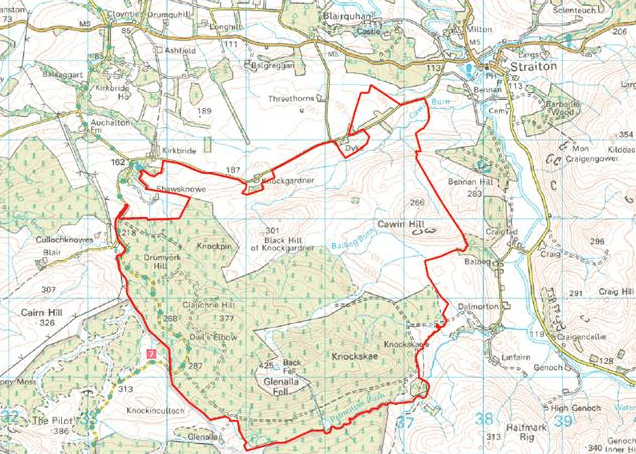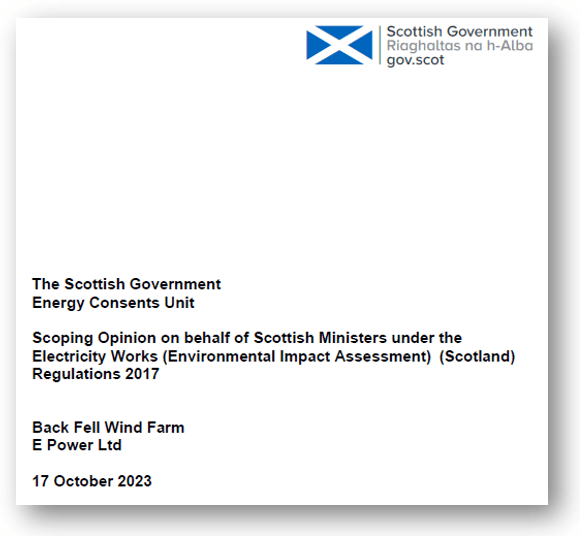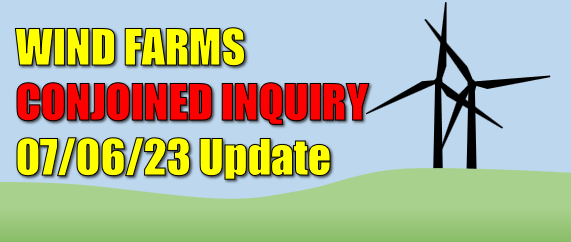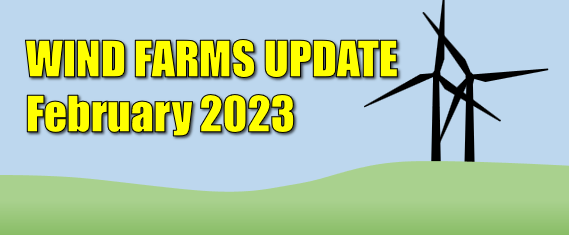The first from BBC Northern Ireland where a wind power scheme is being recommended for refusal with the Department for Infrastructure stating that the “economic and environmental benefits” had been outweighed by “the significant harm that would be caused to the landscape” and the “ecological impacts” on protected species”.
The second, from Nation Cymru, where a council has produced an assessment detailing several potential negative impacts of a proposed wind power plant, from potential noise issues impacting nearby residents and the visual impact of the turbines.
Although not in Scotland, these show that some authorities are waking up the harmful impact of such schemes.
Wind Farm Application In County Antrim Recommended For Refusal
https://www.bbc.com/news/uk-northern-ireland-67936199
A planning application for a “regionally significant” wind farm should be refused, the Department for Infrastructure has said. The notice of opinion to refuse was issued on Tuesday.
Renewable energy firm RES wanted 14 turbines on Unshinagh mountain, in an Area of Outstanding Natural Beauty in Antrim Coast and Glens.
Mid and East Antrim Borough Council previously expressed concern about the impact on tourism.
Northern Ireland has a legally-binding target of generating 80% of electricity consumption from renewable sources by 2030.
A statement said “due cognisance” had been given to “the contribution that renewable energy can make to both the economy and tackling climate change”.
But it added that the “economic and environmental benefits” had been outweighed by “the significant harm that would be caused to the landscape” and the “ecological impacts” on protected species”.
RES had said the wind farm would be capable of generating enough power to supply 70,000 homes, as well as creating £24.7m in jobs and investment.
Jennifer McCorry, the firm’s senior development project manager, said it was extremely disappointed by the decision.
She said that for Northern Ireland the project would help Northern Ireland to meet renewable energy targets and create up to £5m worth of wages in the 12-month construction period.
Report Details Negative Impacts of Mountain Windfarm Plans
nation.cymru/news/report-details-negative-impacts-of-mountain-windfarm-plans/
One of two councils straddled by a windfarm planned for a mountain site, has produced an assessment detailing several potential negative impacts of the proposals.
A wind farm planned for a mountain and which would stretch across two Gwent boroughs could have a number of potential negative impacts, an assessment has found.
An examination of plans for an eight-turbine development at Mynydd Llanhilleth by Torfaen Borough Council’s planning department has identified up to eight potential negative impacts should it go ahead.
They range from potential noise issues impacting nearby residents and the visual impact of the turbines – that would measure up to 180 metres to the tip of their blades – to the possibility upgraded access routes at Llanhilleth Common could encourage more off road vehicles to use the area.
The report also highlights that the proposed wind farm is just one of a number planned for the Torfaen and Blaeanau Gwent areas and states: “The cumulative effect of other wind farm developments that have been approved or may come forward in the near future raises concerns.”
Members of Torfaen’s planning committee will be presented with the report when they meet, at the Civic Centre in Pontypool, on Wednesday, January 10 to consider the application for the Llanhilleth wind farm that has been made by the Pennant Walters firm.
It’s claimed construction, which could start in 2025 and last for 22 months, would create hundreds of jobs, though there would only be four permanent full-time maintenance positions when the wind farm, which would be south east of Abertillery and east of Llanhilleth, is operational.
However councillors aren’t able to decide the application – which is intended to generate 34 megawatts of electricity which is enough to power 21,500 homes – as it is considered a development of national significance.
As a result the application will be examined by independent inspectors Planning and Environment Decisions Wales (PEDW) which will complie a report and make a recommendation for a Welsh Government minister on whether they should approve or reject the application.
Only one of the turbines is planned for an area the Welsh Government has already assessed as suitable for wind turbines, with the others to be sited north and east of that boundary.
Local impact report
Torfaen must produce its local impact report, for PEDW, by January 17 setting out, based on factual information, what the council considers the likely impacts will be.
Those include the concerns related to views of the upland areas of Torfaen and Blaeanau Gwent with other wind farms proposed at Mynydd Maen and Trecelyn, Mynydd Carn y Cefn and Manmoel.
That could “alter the landscape characteristic of open unbroken skylines along valley ridges” according to the council, which is also concerned at a “proliferation of turbines” in what the Gwent councils have designated the Eastern Uplands and Western Uplands Special Landscape Areas.
Torfaen said the “overall cumulative impact” would be negative and that the Llanhilleth wind farm would “have a negative, albeit reversible visual impact, on two of the eight” Special Landscape Areas within the Torfaen”.
Mitigations have been suggested by the developer, but the council has said it hasn’t yet had enough information so it “must conclude that there would be an adverse impact”. It also hasn’t had enough information to assess the impact on protected species so has concluded the ecological impact is likely to be “negative, at best, neutral”.
The applicant’s environmental impact assessment has identified 20 properties that would be affected by noise. The noise would be above the acceptable limit at six properties during the daytime, but only one at night.
Unclear
However, Torfaen has said while the applicant has proposed a condition to reduce noise to acceptable levels it is unclear if this could be achieved, including that people could use their gardens.
The council is satisfied with how it is planned to deal with shadow flicker from the turbine blades.
The other negative impacts identified are the potential that the nearby Tirpentwys Quarry wouldn’t be able to be brought back into use, should plans come forward, and the issue of off-road vehicles using the improved tracks, though the council acknowledges there is “no objective evidence” to support the theory.
The council has also accepted the environmental impact statement’s assessment that the wind farm would not have an adverse effect upon the outstanding universal value of the Blaenavon World Heritage Site.
The application also covers a proposed substation and underground power cables and grid connection and associated construction infrastructure.



























